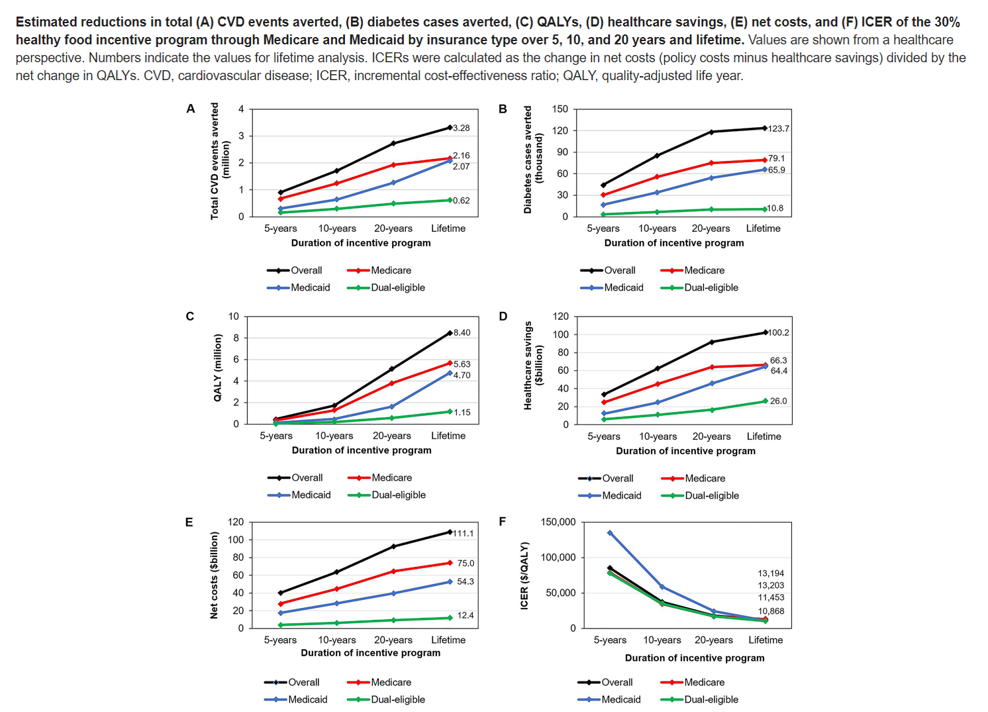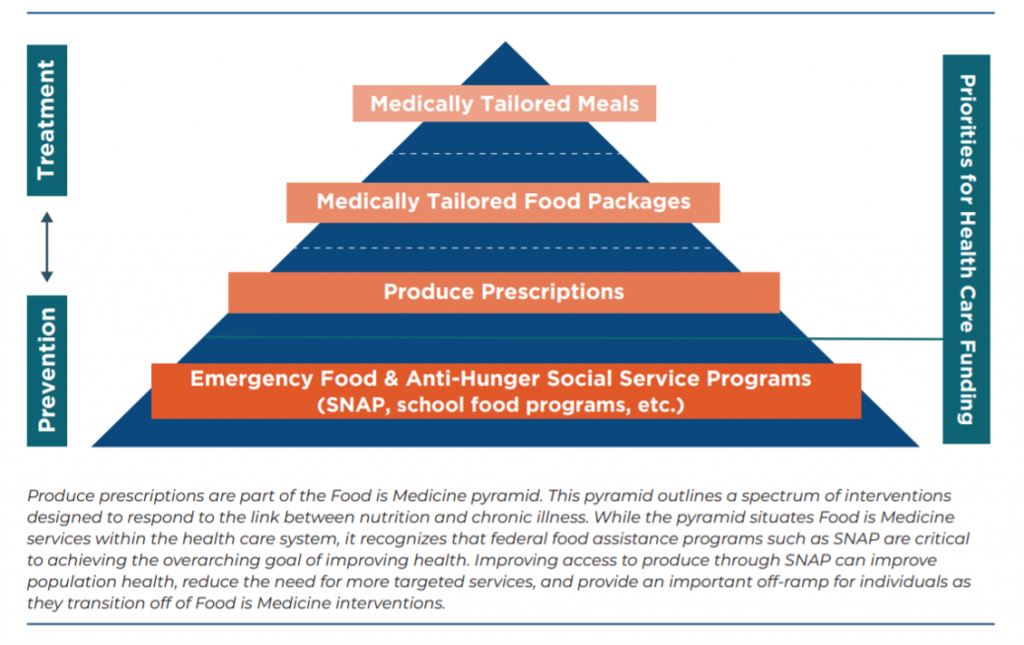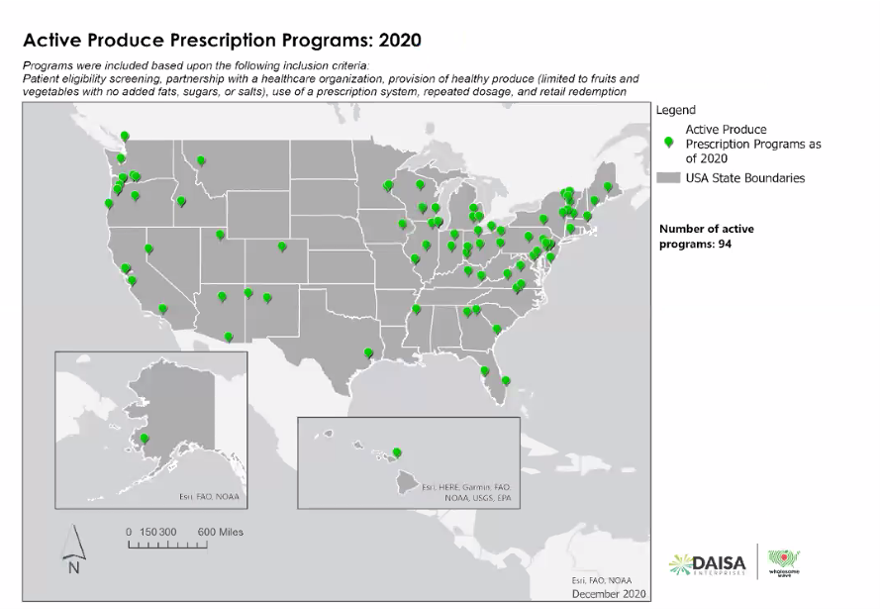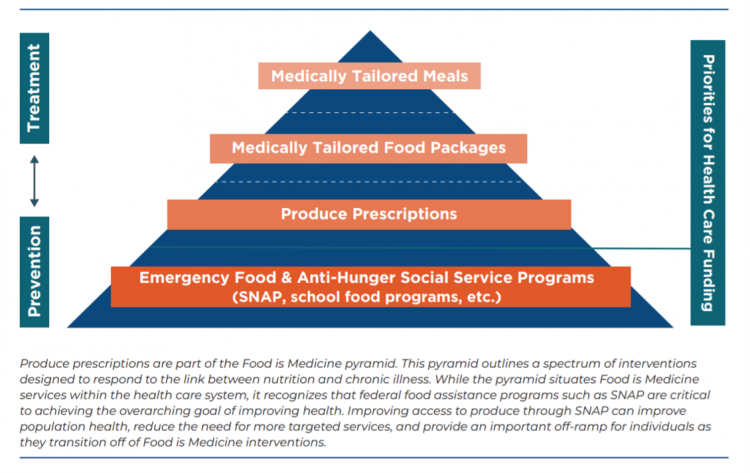Springtime is finally emerging on the east coast of the U.S. and my local CSA farm is on my mind. It’s timely, then, to re-visit a research paper on subsidizing fruits and vegetables from a March 2019 issue of PLOS as an introduction to a new initiative growing out of The Center for Health Law and Policy Innovation of Harvard Law School (CHLPI) on produce prescriptions. Timely, too, that Chef José Andrés has been called to President Biden’s White House to help address food security in America.
 First, let’s look at the research in PLOS: Cost-effectiveness of financial incentives for improving diet and health through Medicare and Medicaid: A microsimulation.
First, let’s look at the research in PLOS: Cost-effectiveness of financial incentives for improving diet and health through Medicare and Medicaid: A microsimulation.
The bottom line of the study was that subsidizing healthy food prescriptions in large government-sponsored health programs like Medicare and Medicaid can drive healthy population outcomes and conserve costs. That’s health cost savings at scale, given that Medicare and Medicaid cover about 1 in 3 U.S. health citizens and together consume 25% of the U.S. Federal budget.
The research was supported by the National Institutes of Health, National Heart, Lung, and Blood Institute and conducted by a Boston-based team from Tufts and Brigham and Women’s Hospital.
The team constructed a model that estimated cardiovascular disease and diabetes cases along with patients’ quality-adjusted life years (QALYs); health care, indirect and lost productivity costs; and, cost-effectiveness modeled for two scenarios:
- A 30% subsidy on fruits and vegetables, and
- A 30% subsidy on a broader portfolio of healthy foods in addition to fruits and veg, adding in whole grains, nuts/seeds, seafood, and plant oils.
Using a predictive model, Scenario 1’s food and veg (F&V) incentive would prevent 1.93 cardiovascular disease events and 350,000 CVD deaths, saving $40 billion in health care costs.
Scenario 2’s savings in lives and costs were even greater: 3.28 million CVD events, 620,000 averted deaths due to cardiovascular disease, and $100 billion saved in health care costs.
These findings are rooted (no pun intended) in that new program from Harvard Law on Mainstreaming Produce Prescriptions.
 In the policy paper published as part of the project, the authors call out poor diets in the U.S. as a leading contributor to mortality, morbidity, and health care costs in the nation.
In the policy paper published as part of the project, the authors call out poor diets in the U.S. as a leading contributor to mortality, morbidity, and health care costs in the nation.
Eating fruits and vegetables lowers risks of chronic conditions like cardiovascular disease, obesity, cancers, and diabetes, and cost the U.S. over $1 trillion in direct medical expenses annually.
Produce prescriptions, defined above in the blue block, have evidence in improving blood pressure, reducing body mass index, reducing hemoglobin A1c levels for people with diabetes, decrease depression symptoms, and enhance food security.
The COVID-19 pandemic has exacerbated an already-bad food security situation in the U.S., resulting in long food bank lines and revealing systemic inequities in the country for all social determinants of health — of which nutrition and healthy food access is a major one.
The report from the Harvard Law team scans this environment making policy prescriptions for improving Americans’ access to fresh fruit and vegetables, including recommendations for funding, research, patient data and privacy, infrastructure, and future advancements for the field.
 As of December 2020, there were nearly 100 active produce prescription programs operating in the U.S., based on DAISA Enterprise‘s national scan illustrated in the map.
As of December 2020, there were nearly 100 active produce prescription programs operating in the U.S., based on DAISA Enterprise‘s national scan illustrated in the map.
The top-line of Mainstreaming Produce Prescriptions is to broaden coverage of produce prescriptions for Medicaid, Medicare and Veterans Affairs health programs to drive population health, health equity, and lower costs for U.S. health citizens and taxpayers.
Health Populi’s Hot Points: The research from the Tufts/Brigham & Women’s team and the Harvard Law produce prescription vision will be well-received in the current White House, which called on Chef José Andrés to help solve food security in America. In this video, published by the White House on 26th March, Chef Andrés explains how the American Rescue Plan is one pillar of a multi-pronged approach to bolstering nutrition, health and financial wellness for all Americans.





 Thanks to Feedspot for naming this blog, Health Populi, as a
Thanks to Feedspot for naming this blog, Health Populi, as a